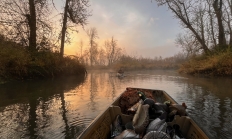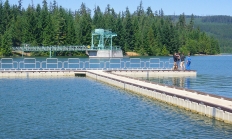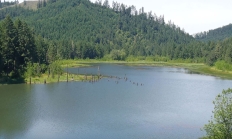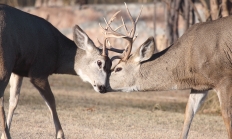Search myodfw.com
NW BIG GAME HUNTING December 4, 2025 Currently open Fall bear, Cougar ( check current harvest numbers), Coyote, Deer and Elk ( Check regulations for specific dates and units) Upcoming season Elk season dates in the Hunting Regulations Announcements, resources 2025 Big Game Hunting Forecast Big game harvest statistics - You'll find links to population, harvest and point summary reports that can help you decide what hunts to apply for next season. Please report elk with hoof disease - If you see elk showing signs of elk hoof disease, including lame or limping elk or elk with damaged, injured, missing
NE Fishing December 4, 2025 Best bets for weekend fishing Trout and whitefish fishing should be good throughout the fall on the Wallowa River. Steelhead fishing has been good on the Grande Ronde and Imnaha Rivers Steelhead fishing is good on the Umatilla River. Trout can still be found on Willow Creek Reservoir. Trout stocking Regular stocking will resume in March 2026. Check out the 2025 stocking schedule. Trout stocking maps Check out the ODFW fishing and trout stocking maps to find nearby fishing locations, driving directions and descriptions of amenities. Announcements If your favorite fishing spot is no longer


SW BIG GAME HUNTING December 4, 2025 Currently open Fall bear, Cougar ( check current harvest numbers), Coyote, Deer and Elk ( Check regulations for specific dates and units) Announcements, resources 2025 Big Game Hunting Forecast Big game harvest statistics - You'll find links to population, harvest and point summary reports that can help you decide what hunts to apply for next season. Please report elk with hoof disease - If you see elk showing signs of elk hoof disease, including lame or limping elk or elk with damaged, injured, missing or deformed hooves, please report it using this online





Regulating harvest, health, and enhancement of wildlife populations Living with wildlife Oregon's permitted wildlife control operators are an individual, business owner, or the business owner's designee charging a fee to control furbearers, unprotected mammals (excluding moles) and western gray squirrels causing damage, creating a public nuisance or posing a public health or safety concern in incorporated city limits and associated urban development areas. They are permitted by ODFW and governed by a set of rules.
SE WILDLIFE VIEWING December 4, 2025 Harney County This time of year, in Harney County, wildlife viewing is typically targeted towards waterfowl, a variety of shore birds, and raptor species. Look to Malheur National Wildlife Refuge or any of the various reservoirs in the county which should have good water this year. Raptors are present in the district and opportunities abound throughout the county. Look on fence posts, telephone poles, and amongst cliff and talus slopes to see a variety of species that include red-tailed hawks, prairie falcons, ferruginous hawks, golden eagles, and Swainson's hawks. Many passerine species such as

SW Fishing Dec 4, 2025 Best bets for weekend fishing: This is good time of year for Chinook anglers to check wild Chinook bag limits for the locations they are planning to fish. Lost Creek Reservoir has had great reports by folks trolling for rainbow trout. Trout stocking Regular stocking will resume February 2026. Trout stocking maps Check out the ODFW fishing and trout stocking maps to find nearby fishing locations, driving directions and descriptions of amenities. Sign up for the latest information on boater access Marine Board's Opportunities and Access Report incorporates information from federal and state agencies, local

Willamette fishing December 4, 2025 Best bets for weekend fishing: The Willamette River and other water bodies are increasing in activity. Several waterbodies will be stocked with trout this week. Cascade Hike-in Lakes offer beauty, serenity, and the potential for untrammeled fishing opportunities. Trout stocking Stocked the week of Nov 17-21: Row River nature park (formerly Cottage Grove Lake) Scheduled to be stocked the week of Nov 24-28: Walter Wirth Lake, Mt Hood Pond at MHCC campus, Waverly Lake, Junction City Pond, Timber Linn Lake. Check the 2025 trout stocking schedule Trout stocking maps Check out the ODFW fishing and


